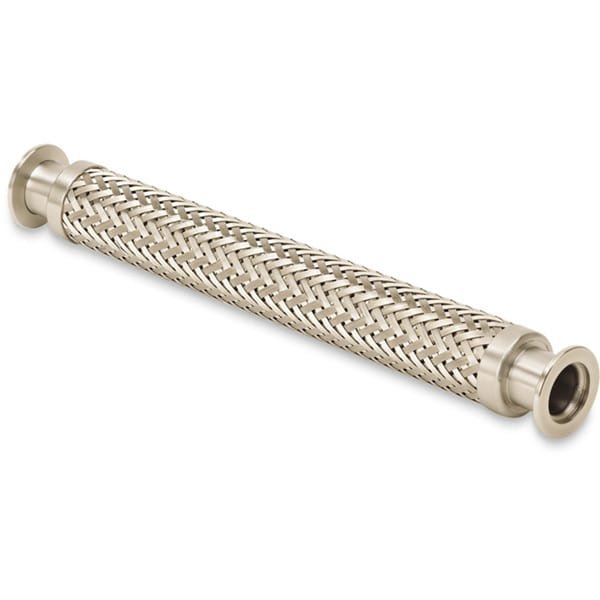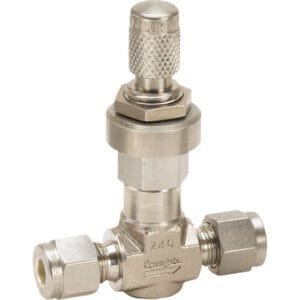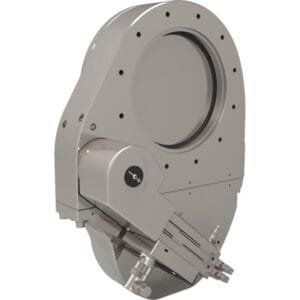Fabrication of ISO Flanged Bellows for High Voltage Systems
TFM specializes in the production of ISO flanged formed bellows tailored for high voltage (HV) systems. These components are constructed using 300 series stainless steel flexible hoses in combination with 304L stainless steel ISO flanges. The ISO flange, often referred to as the Large ISO, is designed specifically for HV chamber ports and comes in two primary configurations: ISO-K, which utilizes clamp fasteners, and ISO-F, which employs nut and bolt fasteners.
Key Features of Hydroformed Bellows – ISO Flanged (Braided Wall)
- Durability: Our flexible hoses are engineered to endure numerous flexing cycles, providing long-lasting performance without the risk of cracking.
- Seam-Welded Design: The bellows are seam-welded to prevent virtual leaks commonly associated with lap-welded seams, ensuring a more reliable seal.
- Flange Options: Available in the ISO-K style with clamp fasteners for ease of use.
- Protection Features: The braided flexible hoses come with a protective sheath, safeguarding the convoluted hose against potential damage during operation.
TFM’s commitment to quality ensures that our products meet the rigorous demands of high voltage systems while providing enhanced durability and reliability.





Reviews
There are no reviews yet.